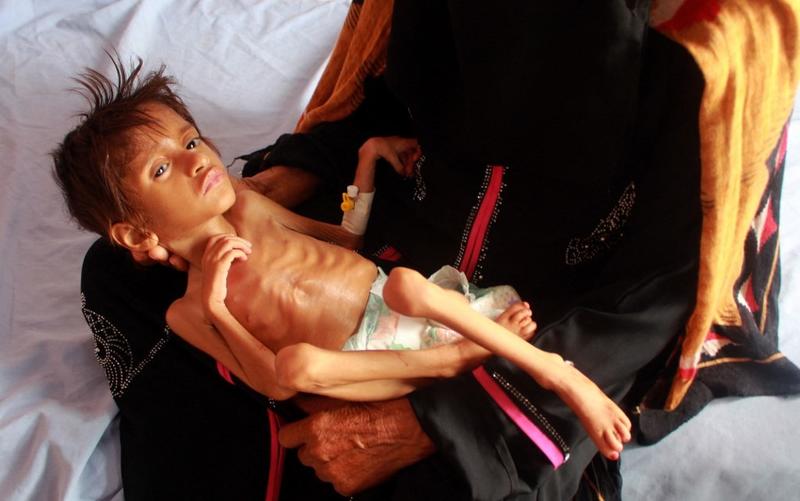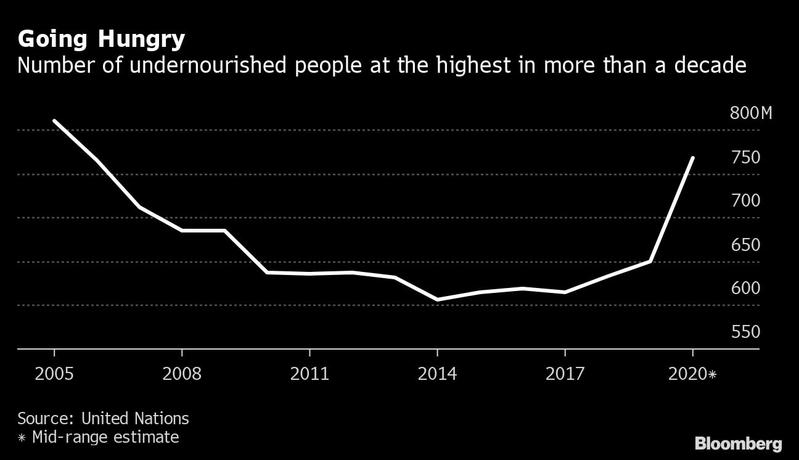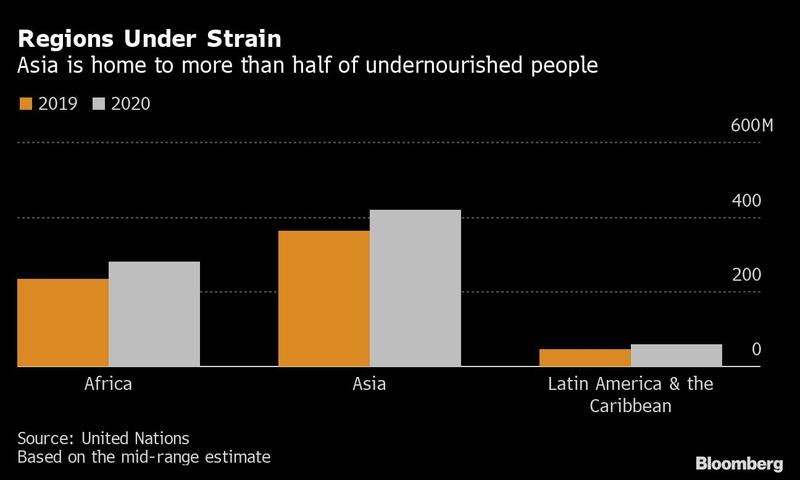 A woman holds a malnourished child at a treatment center in Yemen's northern Hajjah province on July, 5, 2020. (ESSA AHMED / AFP)
A woman holds a malnourished child at a treatment center in Yemen's northern Hajjah province on July, 5, 2020. (ESSA AHMED / AFP)
World hunger spiked last year, outpacing population growth and probably reaching the highest since 2005, as the COVID-19 pandemic curbed incomes and access to food, according to the United Nations.
As many as 811 million people -- about a 10th of the global population -- were undernourished in 2020, the UN said in the 2021 edition of "The State of Food Security and Nutrition in the World".
Of the 768 million undernourished people, 418 million were in Asia, 282 million in Africa and 60 million in Latin America and the Caribbean
Based on current trends, the UN sustainable development goal of zero hunger by 2030 will be missed by a margin of nearly 660 million people. That number is 30 million higher than in a scenario where the pandemic had not occurred.
"Our worst fears are coming true. Reversing such high levels of chronic hunger will take years if not decades," said WFP chief economist Arif Husain.
The fallout from the pandemic put healthy food further out of reach for many people, and this year’s surge in food prices to the highest in almost a decade is particularly bad news for poorer countries dependent on imports. Conflict, climate change and economic downturns -- the major drivers of food insecurity and malnutrition -- continue to increase in both frequency and intensity, and are occurring more often in combination.
“While 2020 was an immense challenge for the world, it may also be a warning of unwelcome events to come if more resolute actions to change course are not taken,” the UN said in the report.
ALSO READ: WFP chief warns of hunger pandemic as COVID-19 spreads
Between 720 million and 811 million people were undernourished last year, according to the UN, which used a mid-range of 768 million due to uncertainty of the pandemic’s impact.

Of the 768 million undernourished people, 418 million were in Asia, 282 million in Africa and 60 million in Latin America and the Caribbean. In Africa though, 21 percent of people are undernourished, more than double that of any other region.
Roughly a third of all people lacked access to adequate food, a figure that rose by 320 million from a year earlier, about as much as in the previous five years combined.
READ MORE: Hunger stalks India's poor in double blow
The report -- the first global assessment of food insecurity in the wake of the COVID-19 crisis -- was jointly produced by agencies including the Food and Agriculture Organization, the World Food Programme, Unicef and World Health Organization.
According to the report, malnutrition remains a challenge. Among children, 22 percent under 5 were stunted, 6.7 percent were too thin and 5.7 percent overweight -- figures that could be higher once the pandemic’s impact is fully known.

For every 10 food-insecure men, there were 11 food-insecure women, it added.
The report outlined policies that could improve access to healthy diets, including authorities intervening in supply chains to lower nutritious food costs, social protection measures and helping farmers tackle climate issues.
With inputs from Reuters


